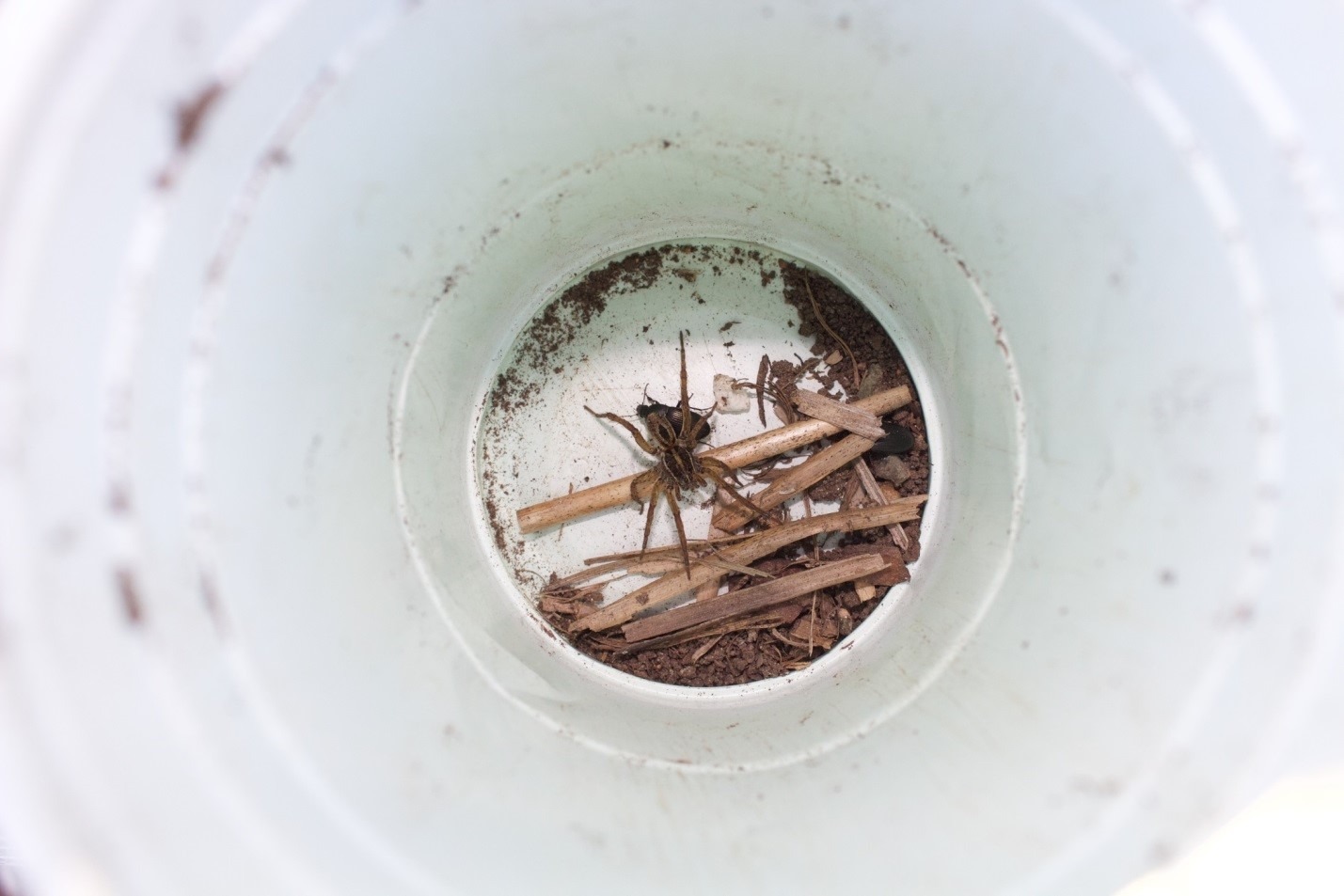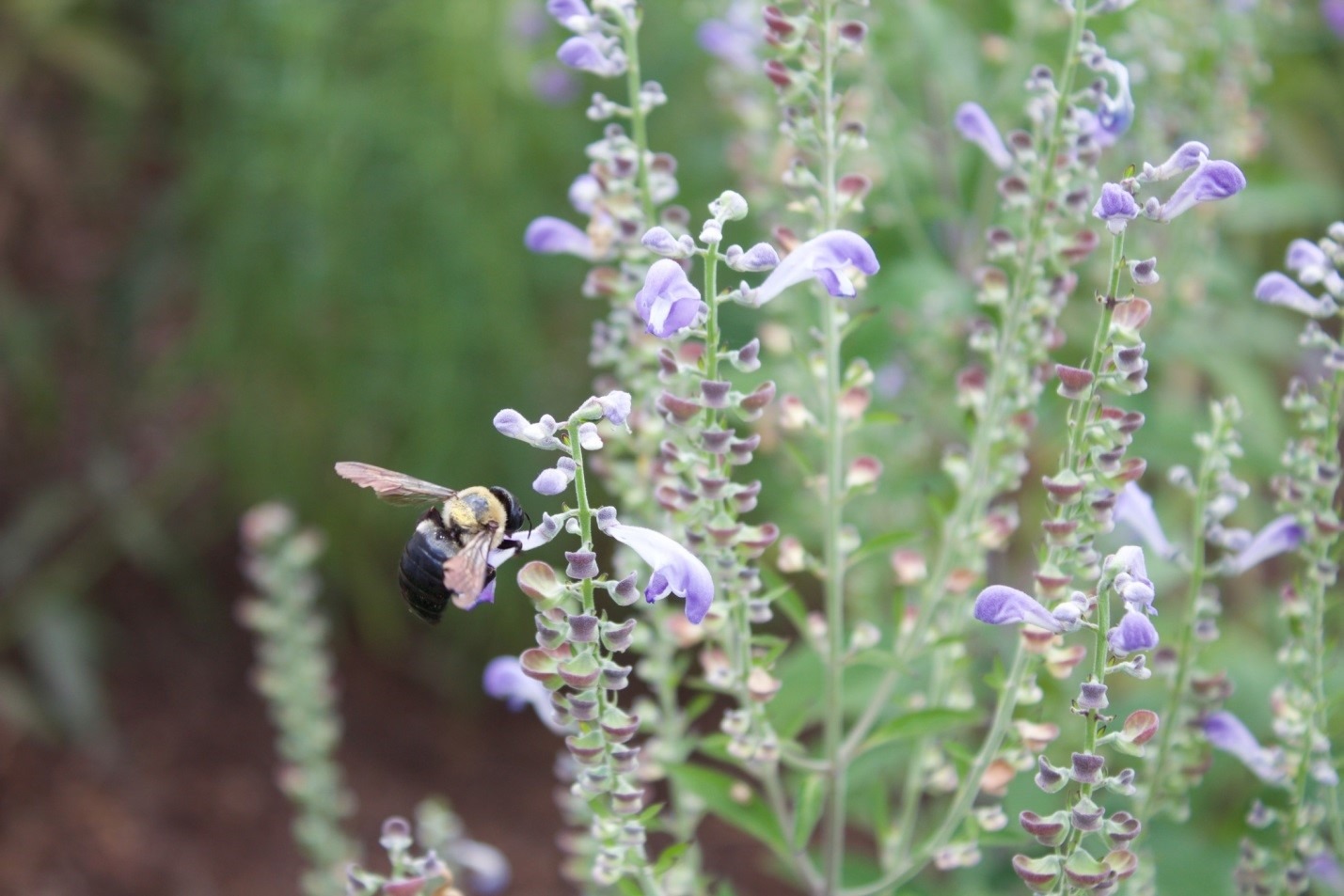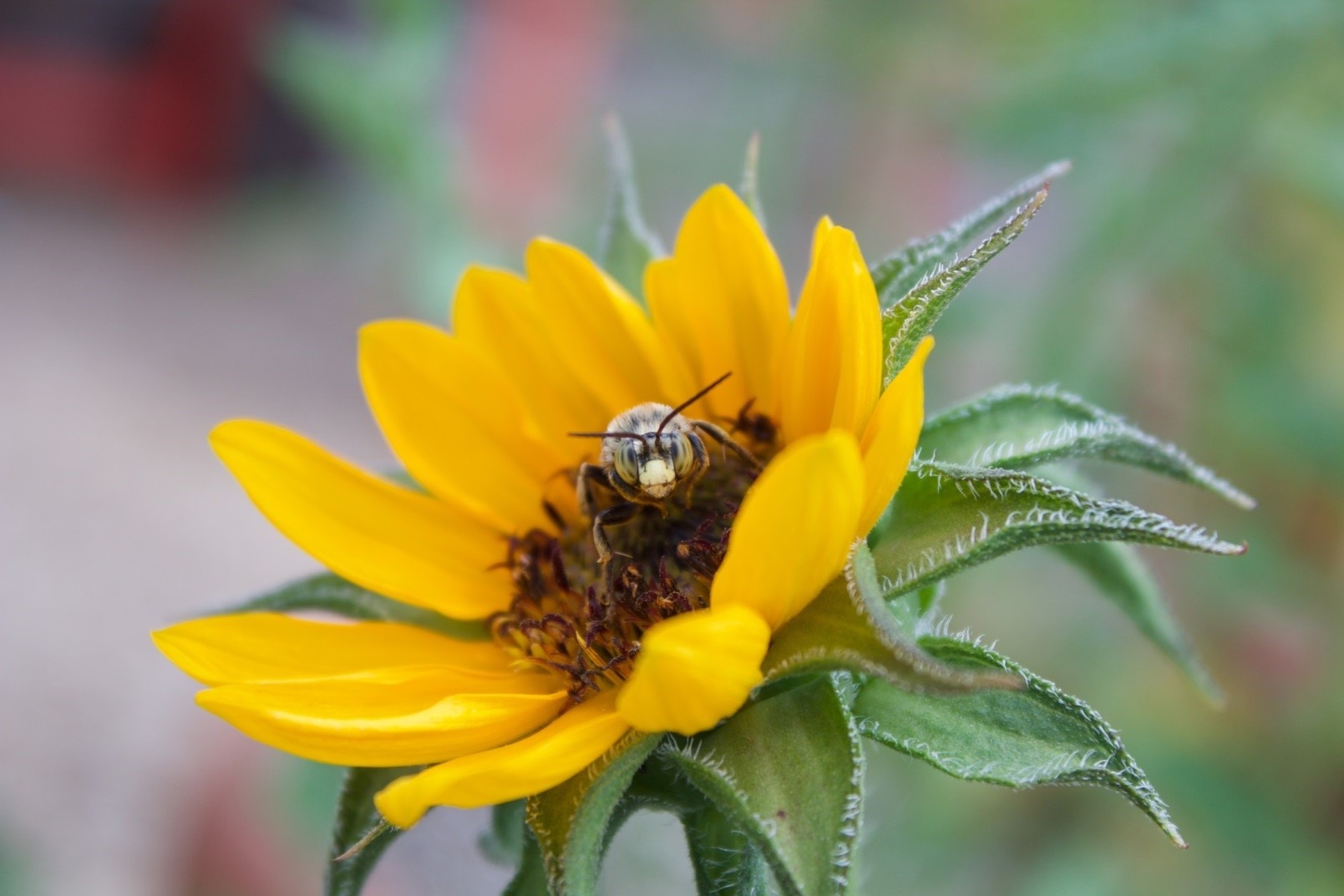Companion Planting to Support Beneficial Insects at Lewis Ginter
The screams of a dozen middle- and high school-aged girls pierce the still air in the Kroger Community Kitchen Garden. I’m in the middle of a demonstration about beneficial insects, excitedly showing them a huge, live wolf spider I had trapped overnight, when the spider seizes the opportunity to leap out of its cup, straight into my unsuspecting audience. My plan to convince them that the intimidating-looking organism is actually beneficial to humans seems to have gone slightly awry in the wake of this incident. Even so, the students are good sports as I hastily redeem myself, reassuring them of the spider’s important ecological role (and, perhaps of greater concern to them in that moment, its inability to inflict serious harm on humans).

A wolf spider (family Lycosidae) perches directly over a ground beetle (family Carabidae), both trapped inside a plastic cup set up within a vegetable bed. Photo by Robin Thady
Wolf spiders, members of the family Lycosidae, are skilled hunters with voracious appetites. Unlike many other spiders, wolf spiders do not spin a web and passively wait for prey to be trapped; instead, they actively pursue prey, darting across the soil and pouncing in a manner that is reminiscent of larger mammalian predators. Combining these hunting skills with a varied diet allows wolf spiders to secure a critical position within a typical garden food web, keeping crop pests like squash beetles and aphids in check while acting as an important food source for larger animals like birds and lizards.
Wolf spiders are not alone in this critical level of the food web, referred to by many ecologists as “natural enemies” or “beneficial insects.” A variety of insects fall into the same category, including flower visitors like wasps and soldier beetles, foliage-dwellers like damsel bugs and lacewing larvae, and soil inhabitants like tiger beetles and ground beetles. These and many other beneficial insects act as a form of organic pest control, reducing the damage caused by crop pests without all of the negative side-effects of chemical treatments.
Companion Planting
Throughout the course of my 12-week Horticulture Research Internship, I carried out a research project to determine how to support these beneficial insects in vegetable gardens through companion planting. I conducted an experiment in the Kroger Community Kitchen Garden, collecting weekly insect surveys to determine whether intercropping with sunflowers (Helianthus annuus ‘Sonja’) and basil (Ocimum basilicum ‘Mammoth’) increased beneficial insects within vegetable rows. I was pleased to find great success in the intercropped treatments – all of them supported more natural enemies than the groups consisting only of vegetables.
Vegetable gardeners can support beneficial insects by offering them additional habitat and food through companion planting. This strategy has the added benefit of inviting pollinators into gardens, as I also noted significantly more bees and butterflies in the companion-planted rows than in the bare vegetable strips.
In addition, native plants can provide excellent habitat for beneficial insects that lasts beyond the growing season. Native perennials like rough skullcap (Scutellaria integrifolia) bloom year after year and remain hardy through the colder months to provide overwintering habitat.

A carpenter bee (Xylocopa micans) visits rough skullcap (Scutellaria integrifolia) in a native flower bed located north of Lewis Ginter’s Conservatory. Photo by Robin Thady
All in all, this research provided an important reminder that even some of the least charismatic organisms, like that ferocious wolf spider, play greatly important roles in ensuring that crop pests stay under control and that higher trophic levels have a steady source of nutrition. If you want to help support a stable garden ecosystem, think about surrounding your vegetables with companion plants or incorporating native flowers for more permanent habitat. And remember, even when a wolf spider leaps straight at your face, it’s doing more good than harm!

A sunflower bee (Svastra obliqua) peers directly into the camera from its position on top of a sunflower (Helianthus annuus ‘Sonja’) in the Kroger Community Kitchen Garden. Photo by Robin Thady
8/15/19 Update
While it is true that wolf spiders are arachnids and not technically insects, their functional services in the garden are quite similar to services provided by true insects, so they are often included in the same category when discussing beneficial insects. The Xerces Society for Invertebrate Conservation also highlights them as a beneficial insect on their scouting guide for natural pest control, which inspired the methodology used in this research project.